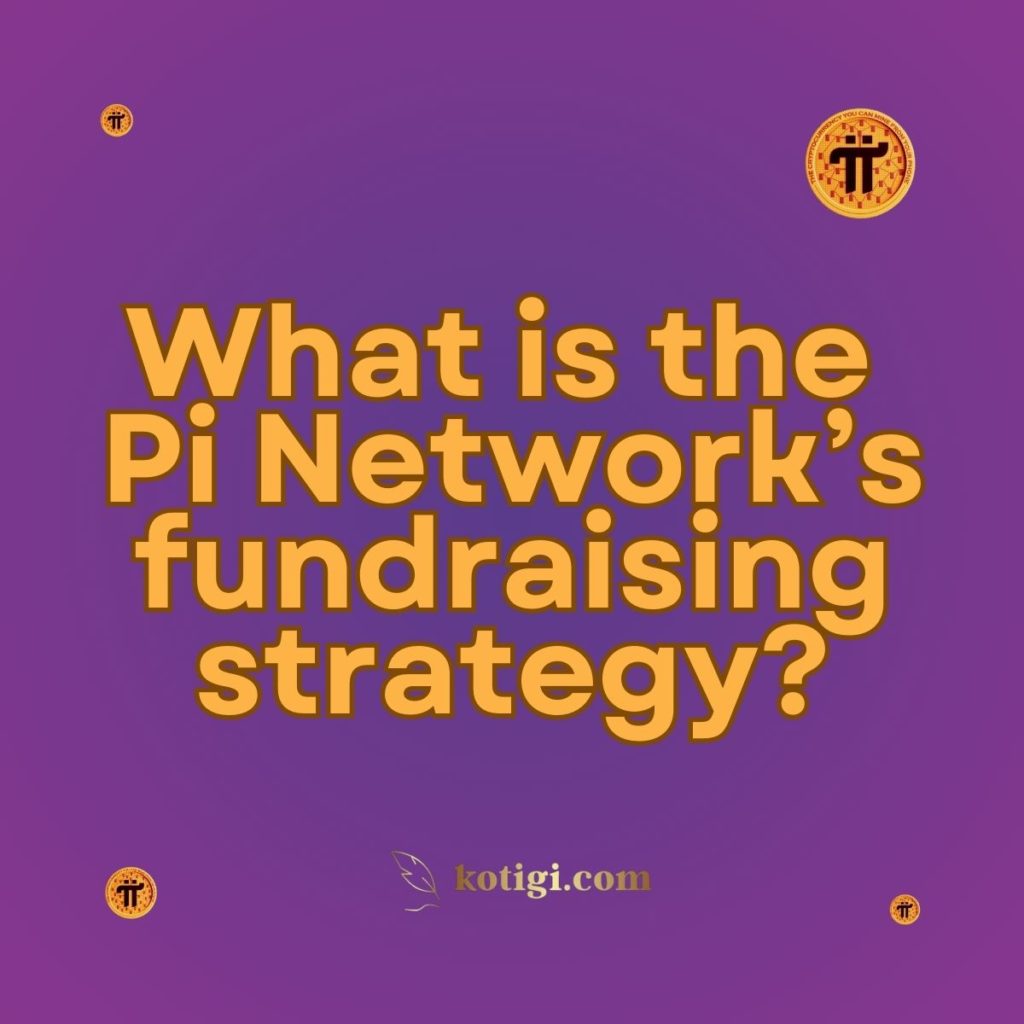
What is the Pi Network’s fundraising strategy?
Pi Network’s fundraising strategy emphasizes community-driven growth, focusing on building utility within its ecosystem before pursuing external capital. This unique approach prioritizes user engagement and ensures that the project aligns with the needs of its community.
Introduction
In the rapidly evolving world of blockchain technology, fundraising strategies can significantly impact a project’s trajectory. While many blockchain initiatives rely on large-scale funding from venture capitalists or institutional investors, Pi Network has chosen a different path. Its fundraising strategy is centered around building a decentralized, community-driven network before seeking external capital. This approach ensures that Pi Network grows in alignment with its users and focuses on creating real utility within its ecosystem.
In this post, we will explore the details of Pi Network’s fundraising strategy, the philosophy behind it, and how it differs from traditional models in the blockchain industry.
Pi Network’s Approach to Fundraising
Community-Driven Growth
Pi Network prioritizes community-driven growth over traditional fundraising methods. Instead of focusing on early-stage venture capital investments, the strategy revolves around expanding its user base through organic growth. This allows Pi Network to build a decentralized ecosystem driven by its users rather than external investors.
Empowering Pioneers
By involving the community from the start, Pi Network ensures that pioneers—early adopters—play a central role in shaping the network. This user-first approach fosters loyalty and ensures that the platform’s growth aligns with the needs of its participants.
Building Utility First
Rather than raising capital to build speculative projects, Pi Network is committed to creating tangible utility within its ecosystem before seeking major fundraising. This utility includes decentralized applications (dApps), marketplaces, and services that leverage Pi cryptocurrency, ensuring that the network has intrinsic value before bringing in external capital.
Delayed Token Sale Strategy
One of the most notable aspects of Pi Network’s fundraising strategy is its decision to delay a public token sale. Unlike many blockchain projects that rely on initial coin offerings (ICOs) to raise large amounts of money quickly, Pi Network has held off on launching its token on exchanges until its mainnet launch. This decision reflects Pi Network’s commitment to building a robust network before monetizing the Pi token.
Avoiding Premature Token Inflation
By delaying the token sale, Pi Network avoids the risk of premature inflation or speculative trading. The focus remains on building real-world applications for the Pi token, which will eventually increase its value when the network’s ecosystem is fully functional.
Controlled Market Release
Pi Network’s strategy also includes a controlled market release for the Pi token to ensure a gradual and sustainable growth of its value. This approach helps prevent market volatility, ensuring that Pi’s price is driven by real-world utility rather than speculative trading.
Types of Fundraising Methods Considered
Private Investment vs. Public ICO
While many blockchain projects rely on public initial coin offerings (ICOs), Pi Network has explored the possibility of raising private capital if needed. However, the project’s commitment to building utility first and delaying the token launch means it has not yet relied heavily on private or public fundraising methods.
Benefits of Avoiding an Early ICO
By avoiding an early ICO, Pi Network can focus on building a strong foundation and creating value for its users before seeking external funding. This approach reduces the risk of short-term price volatility and ensures the long-term sustainability of the network.
Potential for Future Private Investment
Although Pi Network has not focused on major fundraising yet, it may consider private investment rounds in the future once its ecosystem is more mature. This would allow Pi to bring in strategic partners who can contribute to the long-term success of the project.
Ecosystem Development Partnerships
Developer Incentives
Pi Network encourages developers to build decentralized applications (dApps) on its platform through incentive programs. These incentives are part of a larger ecosystem development strategy that fosters innovation and growth without relying heavily on traditional fundraising.
Business Collaborations
By forming partnerships with businesses, Pi Network can bring real-world use cases for its cryptocurrency without the need for large-scale capital raising. These partnerships allow Pi Network to expand its utility and create value for its users organically.
The Role of User Engagement in Fundraising
Monetizing Community Engagement
Pi Network’s unique approach to fundraising is closely tied to its community engagement efforts. Rather than relying on external capital, Pi Network focuses on monetizing the value created by its user base. This includes offering services, decentralized applications, and marketplace opportunities where Pi tokens can be used in exchange for real-world goods and services.
Decentralized Marketplaces
One of the key components of Pi Network’s future monetization strategy is decentralized marketplaces. By creating platforms where users can buy and sell goods using Pi tokens, the network generates value that can be monetized over time, reducing the need for traditional fundraising.
Microtransactions
Pi Network also plans to enable microtransactions within its ecosystem, allowing users to engage in small-value exchanges using Pi. These microtransactions represent a sustainable revenue stream for the network, further reducing the need for traditional fundraising.
Future Fundraising Prospects
Mainnet Launch and Token Release
The most significant future fundraising opportunity for Pi Network will come with its mainnet launch and the release of the Pi token on cryptocurrency exchanges. This event will provide Pi Network with the ability to raise funds through the controlled release of its token while ensuring the network’s growth remains sustainable.
Gradual Token Sales
Pi Network plans to release its tokens gradually into the market to prevent extreme price volatility and speculative trading. This controlled approach allows the project to maintain a stable token economy while raising the necessary funds for future development.
Strategic Partnerships with Investors
Following the mainnet launch, Pi Network may consider forming strategic partnerships with investors who align with its mission of decentralization and financial inclusion. These partnerships would provide the project with the capital needed to continue its growth while staying true to its community-driven ethos.
Conclusion
Pi Network’s fundraising strategy is unique in the blockchain industry. By prioritizing community-driven growth, building utility before seeking external capital, and delaying its token launch, Pi Network ensures that its fundraising efforts remain aligned with its long-term goals of decentralization and user empowerment. As the network matures and its mainnet launches, Pi Network will have multiple opportunities to raise funds sustainably while maintaining its commitment to its users.
Key Takeaways
- Community-Driven Growth: Pi Network prioritizes expanding its user base and creating value within its decentralized ecosystem before seeking large-scale fundraising.
- Delayed Token Sale: By delaying the token launch, Pi Network avoids early speculation and ensures that its token has real utility when introduced to the market.
- Incentivizing Participation: Pi Network’s reward structure encourages community engagement, reducing reliance on traditional fundraising methods.
- Future Fundraising: The mainnet launch and controlled token release present future fundraising opportunities, ensuring sustainable growth for the project.
- Self-Sustaining Ecosystem: Pi Network aims to create a decentralized economy that generates value through user participation and real-world utility.





